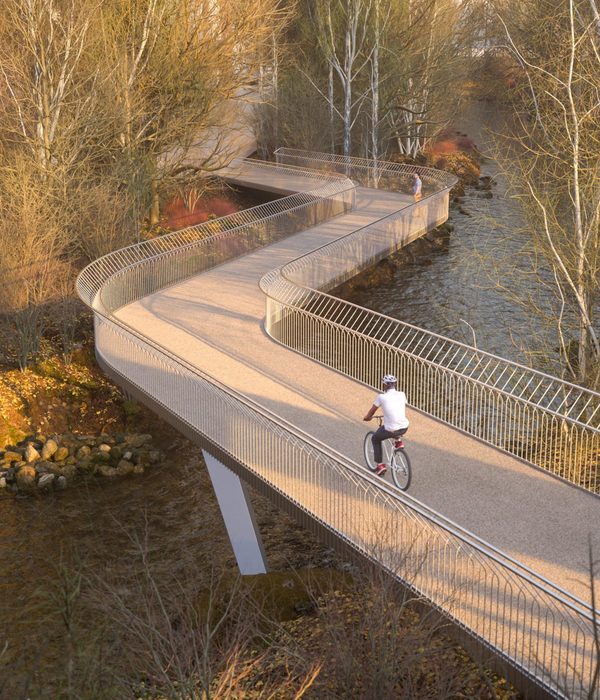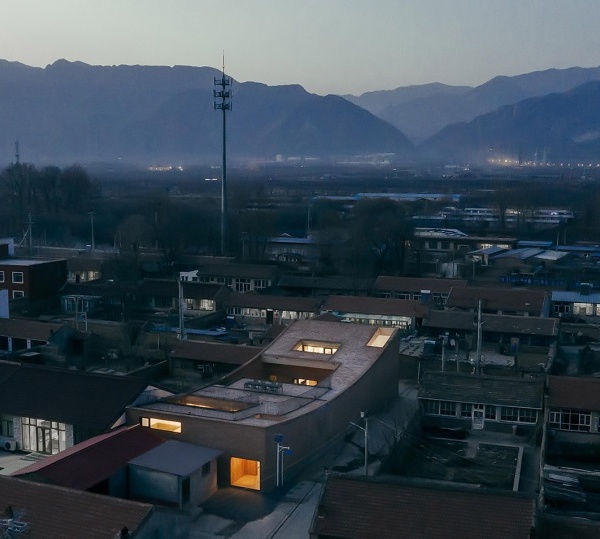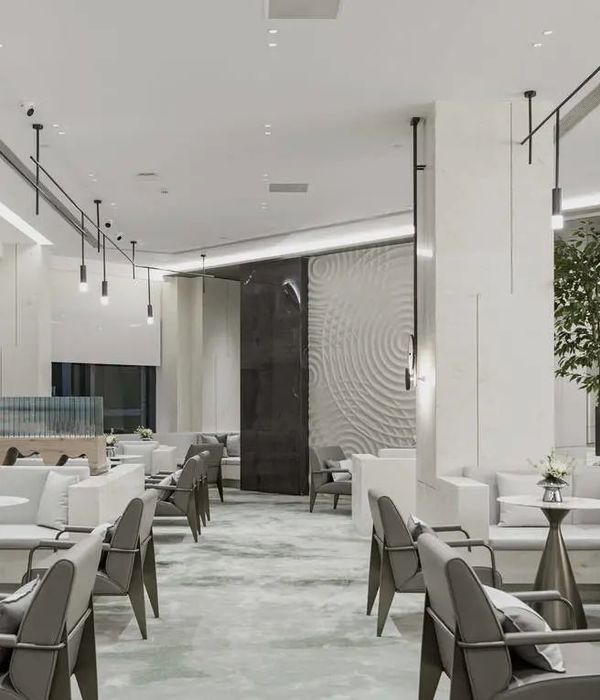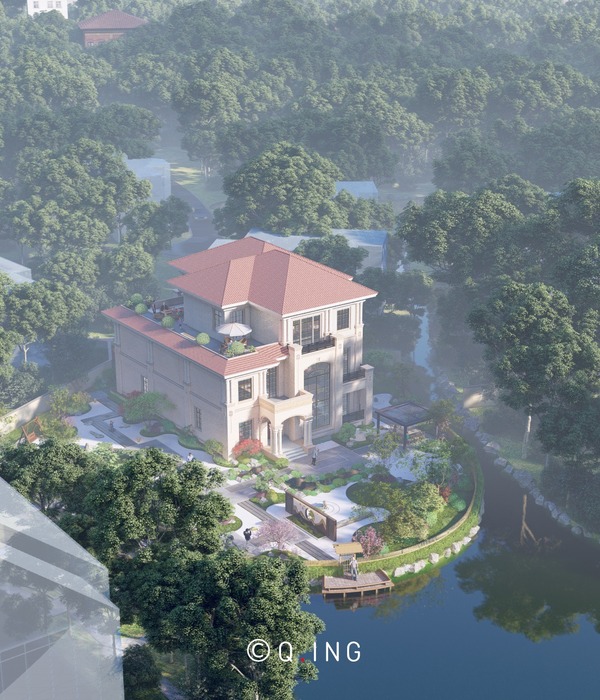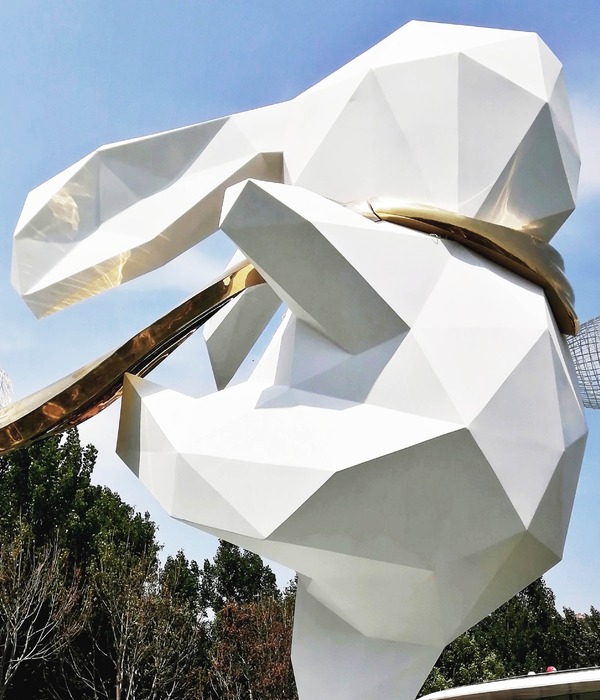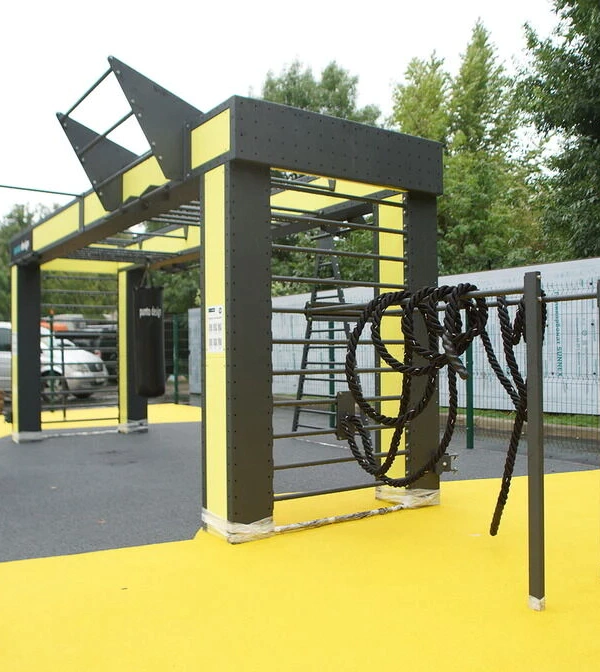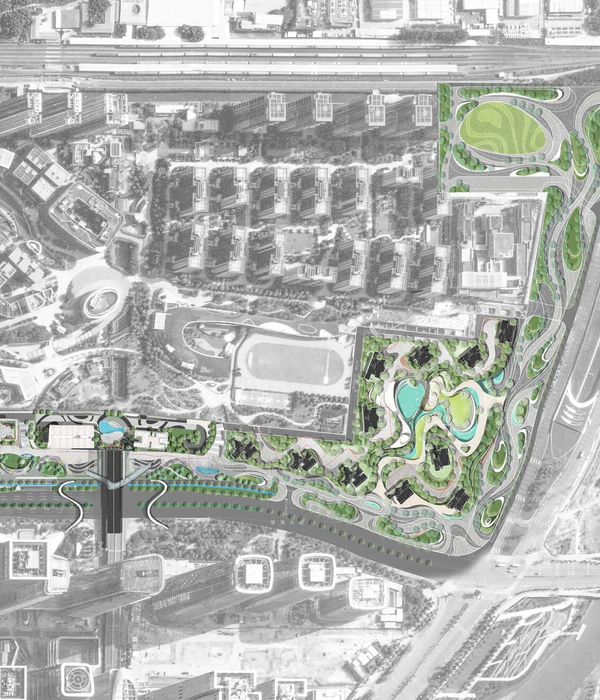TK Studio:为满足泰国的能源消耗需求,泰国 PTT LNG 有限公司建造了一个新的接收站,并将其规划为世界级的液化天然气接收站。PTT LNG 公司收购了 Nong Fab 社区(罗勇府主要工业区附近的一个小型社区)海岸线附近 29.7 公顷的空地,其中 21.6 公顷毗邻海岸线的土地将用作接收终端,用于转运液化天然气、储存和再气化过程;其余 8.1 公顷的土地将划为办公地带。
TK Studio:PTT LNG has constructed a new receiving terminal to cope with the demand for energy consumption in Thailand, and planned it as a world class LNG terminal. The 29.7 hectares of vacant land near the shoreline of Nong Fab, a small community at the vicinity of Rayong major Industrial Estate was acquired, of which 21.6 hectares of land adjacent to the shoreline will be used as the receiving terminal, for transfer LNG, storage, and regasification processes; and the remaining 8.1 hectares of land will be designated as the office zone.
“Nong Fab”是泰国的一个生态性名词,代表了一种特殊类型的景观特征——以“Fab”(阔叶灌木,高1.5-5米,叶较浅)为优势物种的咸水沼泽地。然而,这片收购的土地大部分被填平,只剩下小片沼泽地,所有的“Fab”都几乎已消失。场地上长满了原生草类,和仅有的几棵鹊肾树、榕树、柚木和榄仁树散落在场地周围。
规划为办公区的地形相对平坦,并向退化的沼泽地缓缓倾斜。项目团队利用回溯遥感数据分析了现有的水文系统,以更好地利用现场现有的自然排水系统来恢复受损的沼泽,重新引入Fab 植物,启动新的造林计划,并保护濒危的本地植被物种。除了收集降水数据外,团队还对罗勇的森林类型及其植被进行了研究,并在整个区域进行了土壤和水测试。
“Nong Fab” is a name place of Thai ecological expression, representing a special type of landscape character – a brackish swampy land with “Fab” (Hymenocardia punctata Wall. ex Lindl.) as the dominant species, which is classified as a hardwood shrub, 1.5-5 meter tall with light foliage. However, the acquired land was partially filled and leveled, only small area of swamp remains and all Fab had disappeared. The site covered with native grass and only a few trees scattered around the site, including Streblus asper Lour., Ficus religiosa, Tectona grandis, and Terminalia catappa.
The topography of the office zone is relatively flat and gently sloped towards the degraded swamp. The existing hydrological system has been analyzed by using backdated remote sensing data, to better utilize the existing natural drainage on site to restore the damaged swamp, reintroduce the Fab, commence a reforestation program, and preserve the endangered indigenous vegetation species. Besides collecting the precipitation data, Rayong forest type and its vegetation has been studied, soil and water tests were conducted throughout the entire zone.
为了与“协调工业与自然的关系”这一主要理念相呼应,设计团队采用了“从废物到环境效益转换”的原则,必须做到最大限度地减少能源消耗和工业产生的废物,更重要的是,必须恢复退化的环境。
To echo with the main concept of “harmonizing the juxtaposition between industry and nature”, the conversion from waste to environmental benefits principle has been applied. Energy consumption and the waste generated from the industry must be minimized, and more importantly, the degraded environment must be restored.
8.1 公顷的办公区被划分为 5 个部分,其中建筑面积占 14%,停车场和流通空间占 26%,蓄水池占 17%,景观和森林面积占 43%。办公大楼是一座巨大的圆形建筑,中心有一个玻璃穹顶,按照 TREES 标准(泰国能源与环境可持续性评级)建造,创造了一个将建筑与景观、室内与室外连接起来的气候中庭。
The 8.1 hectares of office area has been divided into 5 parts, of which 14% is building area, 26% of parking lots and circulation space, 17% of retention pond, and 43% of landscape and forest area. The office which is a large round architecture with a glass dome at the center was built following the TREES standard (Thai’s Rating of Energy and Environmental Sustainability), creating a climatic atrium that connects architecture with landscape, from indoor to outdoor.
再气化过程中产生的过量冷冻水产生的冷空气将被用于空调系统,支持气候中庭内的 23 种温带植物群落,而不是将这些冷冻水直接输送到热带海洋生态系统的海洋中。
The excessive chilled water from the regasification processes has generates cold air which can be used for air conditioning system and supporting 23 species of temperate plant communities inside the climatic atrium, instead of directly transmitting this chilled water to sea of the tropical marine ecosystem.
该地块的规划经过精心布局,保留了残留的沼泽地,并被恢复为带有河岸边缘的蓄水池。这一河岸带再现了罗勇府从沼泽到海滩森林的生态样貌。根据对罗勇本地森林类型的研究,并考虑到地形、与海洋的距离、土壤和水的特性以及水位的波动,TK团队为本项目选择了 200 种本地植物物种和最适合的森林类型以及生态系统。
The site plan is carefully laid to keep the remained swamp and restore it as a retention pond with riparian edge. This riparian zone replicates Rayong’s ecotone from the swamp to the beach forest. Based on the study of Rayong’s native forest types, with a consideration of topography, distance from the sea, soil and water properties, and the fluctuation of water level; 200 native plant species and the most suitable types of forests as well as ecosystems have been selected for this project.
种植有白千层的白千层林将位于坡度较缓的蓄水池岸边,以适应其特定生长条件下的潮汐水位。蓄水池的另一侧是沼泽林和海滩林,这些树木可以适应不同的水位生长。蓄水池经过防渗处理,河岸带则以粘土为基础,强化了生态修复。
The Melaleuca Forest with Melaleuca cajuputi will be located at the bank of the retention pond, which is gently graded, to accommodate appropriate tidal level for its specific growing conditions. On the other side of the retention pond will be the swamp forest, and the beach forest, based on different water levels for growing. The retention pond requires a non-permeable lining while the riparian zone is based on clay.
该项目拥有大面积的硬质景观区域,整个场地的径流都会被收集起来,通过生物沟渠处理后排入池塘。蓄水池具有多种功能:帮助维护软景,创造可持续的森林和生态系统,降低温度,提供舒适的环境。沿场地边界设置的保护带形成了一个自然缓冲区,确保了场地内的私密性,能够启动生态效益,增加固碳能力,并能有效控制干扰和污染。
The project has a large hardscape area, runoff from the entire site is collected and processed through bioswale before discharged into the pond. The retention pond has multifunction; help maintain the softscape, create a sustainable forest and ecosystem, reduce temperature, and provide a pleasant environment. A protection strip is placed along the site boundary creates a natural buffer, ensures privacy, initiates ecosystem, increase carbon sequestration, and controls disturbance and pollution.
办公楼后的多功能玻璃草坪还可作为滞留草坪,将渗水过滤到蓄水池中。除了建筑隔热、提供栖息地、延长雨水滞留外,办公楼的绿色屋顶还被用来收集本地草坪植物,并成为项目的一个景观节点。办公楼还将成为能源和植物收集的学习中心,以促进人类与环境之间的社会性联系。
The multifunction glass lawn behind the office building also acts as detention lawn filtering the seepage to the retention pond. Apart from insulate building, provide habitat, prolong rainwater, green roof of the office building is used to collect native grass and be a view point of the project. The office is also meant to be a learning center for energy and plant collection to promote social connection between man and the environment.
PTT LNG 的景观旨在证明工业与自然的和谐共存,通过精心的设计能够创造一个双方都能享受的双赢环境,支持生态系统的多样化,甚至恢复野生动植物的自然栖息地。最重要的是该项目证明,如果设计、建造和运营得当,工业并不一定会破坏环境。
The landscape of PTTLNG intends to testify the harmonized coexistence of industry and nature, creating a win-win environment that is enjoyable by both parties, supporting ecosystem diversification and even restoring natural habitats for wildlife. Most of all to prove that industry is not necessary damage the environment if is designed, constructed, and operated properly.
▽项目分析图 Project analysis diagram
项目名称:PTT LNG Receiving Terminal II
竣工年份:2022 年 9 月 20 日
面积:297000 m²
项目地点:Baan Nong Fab, Map Ta Phut Sub-District, Mueang Rayong District, Rayong Province
景观设计:TK Studio
首席建筑师:Tawatchai Kobkaikit
设计团队:Miss Nantawan Sirisup、Miss Chayaporn Poomchart、Miss Sivanat Ubonratana、Miss Kamonkorn Chamchoy、Miss Patcharanat Phokhinthanasiri、Miss Tiprada Tingklub、Miss Phimphat Buchawang
客户:PTT LNG CO.,LTD.
Project name: PTT LNG Receiving Terminal II
Completion Year: 20 September 2022
Size: 297,000 m²
Project location: Baan Nong Fab, Map Ta Phut Sub-District, Mueang Rayong District, Rayong Province
Landscape/Architecture Firm: TK Studio
Lead Architects: Tawatchai Kobkaikit
Design Team: Miss Nantawan Sirisup、Miss Chayaporn Poomchart、Miss Sivanat Ubonratana、Miss Kamonkorn Chamchoy、Miss Patcharanat Phokhinthanasiri、Miss Tiprada Tingklub、Miss Phimphat Buchawang
Clients: PTT LNG CO.,LTD.
Photo credits: Rungkit Charoenwat
“ 该项目以精细的设计证明了工业与自然的和谐共存,并进一步证明如果设计、建造和运营得当,工业并不一定会破坏环境。”
{{item.text_origin}}

